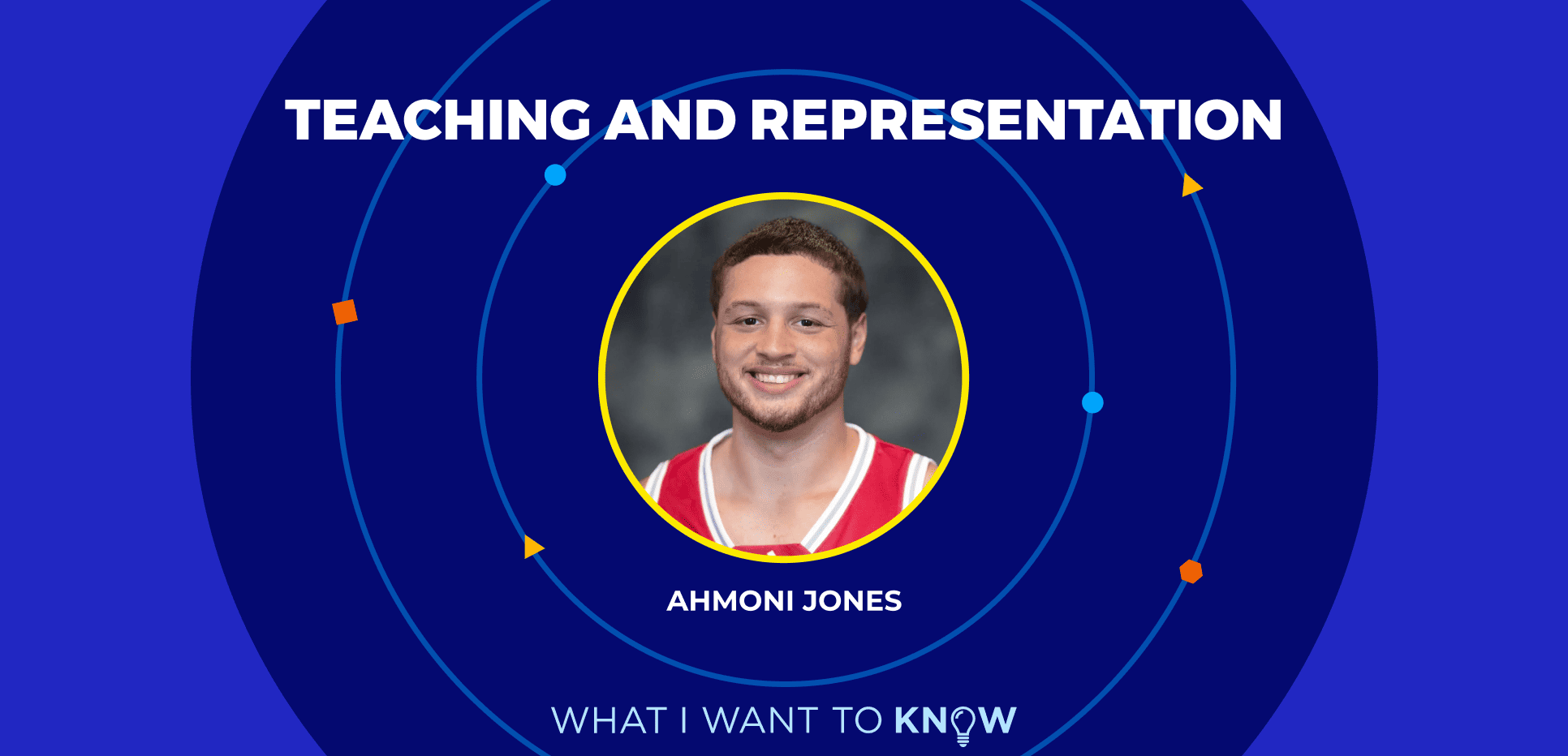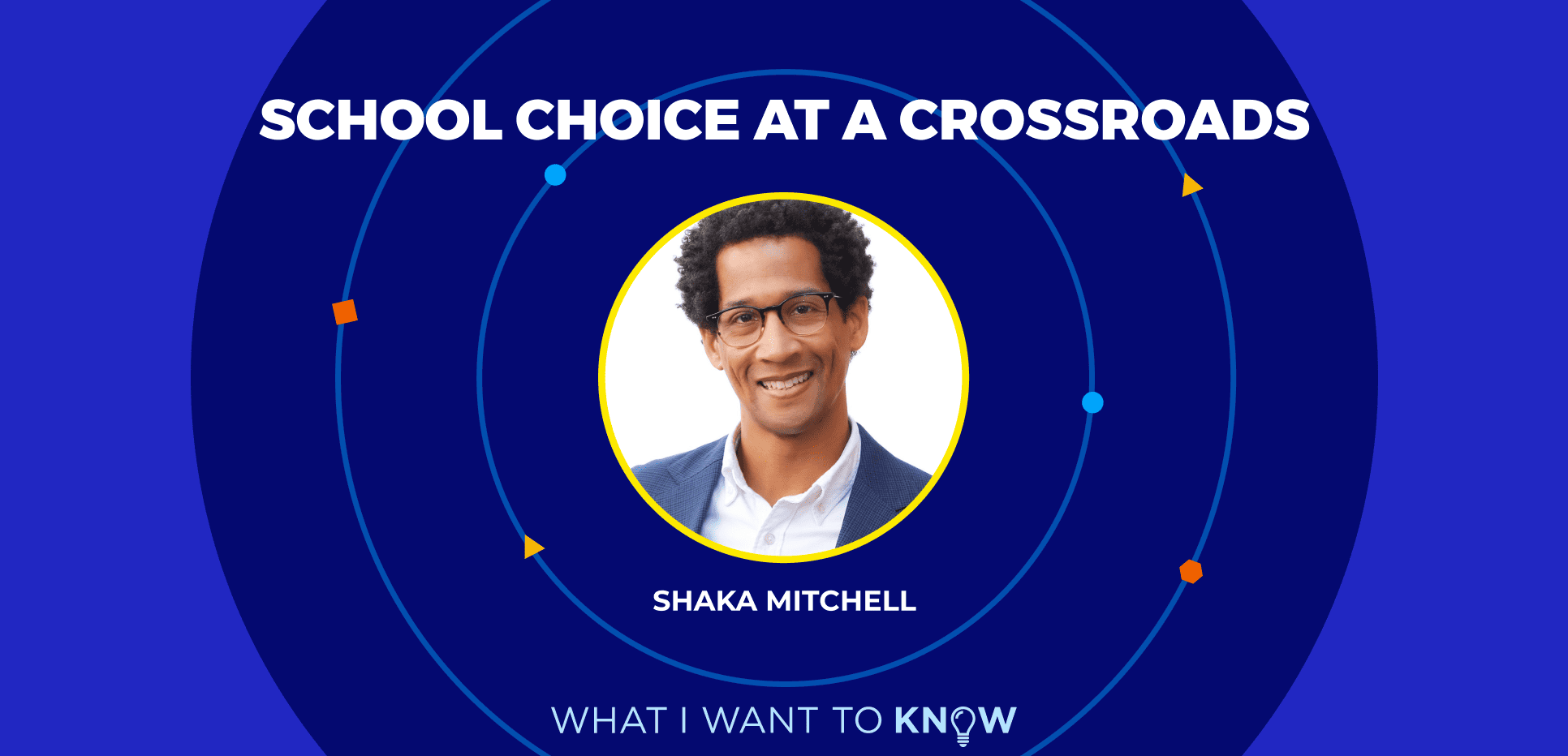According to the Rural School and Community Trust, 9.3 million students in the United States attended a school in a rural district in 2019. That means nearly one in five American students attends a rural school. Yet, delivering high-quality education in these areas can be difficult.
What are some of the challenges rural schools face? Which teaching and enrichment tools can enhance rural students’ experience? And how can government officials create better access and equity for students in rural areas?
Oklahoma Governor Kevin Stitt joins Kevin this week to discuss how we can improve and support rural schools.
Listen to the Full Audio
Listen on: Apple Podcast, Spotify
Transcript
Kevin: According to the rural school and community trust, 9.3 million students in the United States attended a school in a rural district in 2019. That means nearly one in five American students attends a rural school. Delivering a high-quality education in these areas can be difficult. What are some of the challenges rural schools face? Which teaching and enrichment tools can enhance rural students’ experience? And how can government officials create better access and equity for students in rural areas? This is What I Want to kKnow. And today, I’m joined by Governor Kevin Stitt to find out.
Kevin: Kevin Stitt is the 28th governor of Oklahoma, having served since 2019. Prior to taking office, he founded Gateway Mortgage company in 2000, which now operates in 42 states and services more than $20 billion in residential mortgages. Governor Stitt is in his second term in office, following reelection in November 2022. He has increased teacher pay and public education funding, expanded school choice options, and more. He joins us today to discuss the challenges faced in rural schools and how we can give the best possible education to all students. Governor Stitt, welcome to the show.
Kevin Stitt: Thank you so much. It’s such an honor to be with you.
Kevin: We met several years ago, if you remember, in Nashville. And I was struck at the time by your commitment to a quality education for all students. And since then, it is clear that you’ve demonstrated that commitment. You’ve done things like increased teacher pay and funding for public schools. I’m a big advocate for school choice; you’ve moved the needle. But what inspired you, prior to getting into office, to really have this commitment around education?
Kevin Stitt: Yeah. Well, first off, I think that’s the cornerstone of what we’re supposed to do as governors; we’re supposed to do four things. And that is to make sure we have the best education for our kids. Because regardless of where you’re out in the political spectrum or where you live in the state, we really all want the same thing. So we all want for that next generation and our individual children to have every opportunity possible to be successful.
And so, I always remind the legislature and Oklahomans, let Washington, D.C., play politics. We’re all Oklahomans; let’s just make our state top 10. And that’s education; it’s infrastructure; it’s the economy, and it’s healthcare. And those are the four things that I always focus on.
But education is so critical, making sure we remove the roadblocks. We know that every kid learns differently. God puts different desires and abilities in everybody’s heart for different programs or different career paths. And I just want to expose those children to what is possible and get them the right mentors and pathways, whether it’s to become a welder or an electrician or an engineer or an aviation mechanic. And so, that’s what we’re trying to focus on in Oklahoma.
Kevin: Well, it’s interesting because, again, one of the reasons why I wanted you on the show, Governor, is Nebraska, like Oklahoma — I had the teacher of the year from Nebraska talk about the challenges and opportunities in rural communities. And your state happens to have more rural communities than many other states, and yet we don’t always see the focus on those particular challenges that exist in states like Oklahoma. Why is that, do you think?
Kevin Stitt: Well, I think some of our big metro areas kind of suck up all the oxygen, and people kind of focus on those more so than the rural areas. But I’m telling you, the ethos and the work ethic in some of those rural communities is unbelievable. But let’s face it; sometimes they don’t have the best broadband or connectivity and some of the AP programs. And so, what I’ve done is to make sure that those kids in those rural smaller communities have access to all of the same programs and the AP classes that the kids do in some of the bigger schools across the state.
So the other thing that’s important is: That’s why school choice and more options and more schools are so important, to give every kid the opportunity. Not just because you are in a certain zip code or maybe your parents don’t have the resources; we believe school choice should be for every single kid, not just for those that can afford it or are lucky enough to be in certain zip codes. And so, that’s why I fight so hard to give more options to parents and to make sure every kid has the right to a quality education, depending on whatever they want and wherever they want, what their parents feel is best for them.
Kevin: And what we’re seeing is that those choice options do matter. And what is interesting about the rural challenges that I’ve looked at is there are many rural communities. Governor, I don’t know about your state, but there are many rural communities that, because they’ve had budget cuts, aren’t able to offer enough credits for their graduates to even apply to the local state college.
You’ve expanded funding to make sure that some of these communities are getting the resources they need. Talk about that challenge. Because when it comes to materials — you mentioned broadband — when you talk about classroom needs, many rural communities around the country are experiencing significant challenges, which leads to less innovative education. How are you addressing that?
Kevin Stitt: Yeah. Well, first off, like you said, part of that is the internet connectivity. So we set a goal to have 95% of our state with high-speed internet by the year 2028. So I put together a council, so we’re getting that. We did a study of where the underserved areas in our state are, from a connectivity standpoint. Because we had to first get that done so we can pipe in those AP classes or those best classes to those young people.
The other thing I want to address is just more schools. And so, we just set up an aviation academy. And the reason that’s important — and that’s happened to be in Norman — it’s kind of our first test. So when you’re a junior in high school, if you want to be an A&P mechanic or a pilot, you can go to a specific high school now, and you can become an A&P mechanic. American Airlines has a large, large — their largest, actually, maintenance and repair facility located in Tulsa, Oklahoma. Their starting salary for an A&P mechanic is $70,000 a year. And so, we want those young people to understand that by the time they graduate from high school, they could be ready for a great career.
So then we set up $300 million in funding for other rural communities to be able to tap into that specific funding if they want to set up similar types of programs. And maybe it’s a welding program, or maybe it’s a different type of program, or maybe it’s special hiring of more teachers for a specific program to get their workforce ready to go.
We also did what we call redbud funding, which is specifically targeted to rural schools. Because we understand the discrepancy, and we want those rural superintendents, those rural principals, to think outside the box. They know their community; they know how to get those kids ready for the workforce and how we can get that funding directly to them.
So there’s the funding formula, where everybody’s exactly the same. But then we have these special tranches of money that we’re trying to encourage people to be innovative with and to think outside the box. So that’s kind of how we approach it in Oklahoma.
Kevin: I love the idea of more schools. And I know you’ve been a supporter of school choice and charter schools and the like, even of private schools and having more robust offerings for kids. When it comes to rural communities, another challenge, even when you have more schools, could be transportation. How do you deal with the transportation challenge when so many kids in these communities are spread so far apart?
Kevin Stitt: Yeah, great point. So we secured $14 million in federal funding back in 2020 to improve and expand our transit infrastructure. And we implemented kind of an Oklahoma public transit policy plan. It’s the first comprehensive plan we’ve ever done in our state history because we understand some of those challenges of getting to our career techs and getting to some of our other schools.
We passed open transfer. So now a kid can go to any public school that they want, that better fits their needs. But also the career tech. We’ve got one of the best career tech models in the country. And trying to partner those career techs with our common ed, I think, is really, really important as well.
And then we’re also promoting kind of dual enrollment where we want some high school kids in sophomore, junior years to start taking some college classes. So when they get to college, they, in some cases, have 30 – 60 hours of college credit, which saves a lot of money. We pay for that as a state for those high school kids that maybe are trying to just advance themselves.
So all that comes back to transportation. And so, we’re trying to solve that to make sure, especially in those rural communities, if mom and dad are at work, we’re going to go right into the common ed places, and we can bus those over to the career techs or some of our two-year colleges.
Kevin: This idea of career education — candidly, Governor, you know what the political wars are like, you know how divided we are in this country, but career readiness in our traditional educational system is one of the more unifying topics we can see in politics. And I love the fact that you all have a strong career tech focus, but tell me where you think that’s headed. Because this idea of trying to see if everyone’s on a college track doesn’t necessarily make sense. And by the way, a lot of colleges, particularly community colleges, but even a lot of our four-year colleges are understanding the need to prepare young people early on before they get to graduation so that they have skills and certifications and they can move right into their careers.
Kevin Stitt: Well, absolutely. I think for the last 30 years or so, we’ve tried to push everybody to higher ed. “Hey, go become an engineer or doctor or lawyer.” And we just realized that around 51%, 52% of Oklahoma kids are going to go to college, but that other 48%, they’re going to be sitting there thinking, “Well, I’m a failure,” or, “I can’t do it.” But man, there are so many great careers.
I make the joke when I’m traveling the state: We have a great lake here and all the big boats; it’s called Grand Lake, in the northeast part of our state. And I said, “Hey guys, you know the biggest boats on Grand Lake? It’s not the doctors and the lawyers; it’s the electricians, the plumbers, the heat and air, the roofing contractors.”
And it’s so true that those careers are so in demand right now. And we want to make sure that just because maybe your bent is the connection between your brain to your hands, and that’s kind of what you love, we want to encourage that. And I want to tell those young people that, “Hey, being an A&P mechanic at American Airlines or being a plumbing contractor or an electrician, the sky’s the limit for you.” Or if you want to be an electrical engineer and work at Tinker Air Force Base or Boeing or Raytheon, that’s fantastic.
Our job is to give those individual career plans, and we’re starting that as freshmen in high school, and trying to make sure the kids know there are several different paths that you could take. And we want to make sure that you have the right exposure to all those different careers in the state of Oklahoma. So whether it’s career techs or whether it’s higher ed, we want those young people to know that they can have a great life and a great family and a great career with however God has uniquely designed them.
Kevin: Around the country, Governor, there have been incredible challenges with teacher recruiting, teacher retention. Many teachers are leaving the profession. COVID sort of exacerbated that. You did institute an increase in teacher pay in your state. But talk about how you can use not just the challenges of the rural communities in education, but the opportunities and the advantages to get better recruiting for new teachers.
Because, as I have seen, if you’re a teacher in a rural community, then you’re always around those students. You see them at the supermarket; you see them at the bowling alley; you see them wherever. As opposed to many urban environments, where when the teacher leaves the building, they may not see the kid until the next time they’re in class. You can build a learning culture and community when everyone knows the families and knows the folks who are around helping the kids learn. So talk about this idea of how you can recruit teachers to these communities because there’s a huge need, and it’s not just in your state, but it’s all over the country.
Kevin Stitt: Yeah. Very well said. And I think that part of it is culture and it’s encouraging those principles. And even from my perspective as the governor, I’m always promoting that profession. You talk about a rewarding career: it’s giving back to that next generation. And I know that’s on the heart of most teachers and coaches that I know. They don’t get in it to be the richest person in town. They get into it because they know that they’re going to make a difference in that next generation. So promoting that, number one, setting the right culture and appreciating that profession, I think, is part of it.
Obviously, we have to pay market. I came from the business world. So to get the right talent, you have to pay what they’re paying in Texas, in Arkansas and Missouri and the states around us. And so, that’s why I’m doing another pay raise this year. I did one in 2019; we did one in 2018. We’re going to make sure that we pay our teachers what market is. I passed a law last year to pay our best, our mentor teachers, up to a hundred thousand dollars a year.
Because what I was finding was our teachers were then going on to become principals or superintendents to make more money. And the magic happens when we have those best teachers in the classroom. So we wanted to encourage them to stay in the classroom and be mentor teachers to our younger teachers as well. So that’s part of it.
And then also encouraging: We set up a bonus plan for recruiting, those kinds of things. But the other thing I think is important is encouraging people in second careers. So we have some teacher certification, alternative teacher certification. So, a retired doctor or nurse or maybe your kids are grown, and you retired from the oil and gas industry, and you want to go back and coach and give back to that next generation. We’re trying to encourage more of those: the pillars of the community who come back and have a second career. And it’s rewarding. So whether your kids are still in school or your grandkids, I think that’s very important.
And then when you think about the FFA, some of our ag[riculture] programs, you’re right. In those rural communities, you’re going to be seeing those kids at churches and the grocery store, the baseball park. And a lot of times our great teachers are umping, or they’re coaches on the cheerleading squad, and they’re giving back. And that’s the great thing about our rural community.
So maybe there are some disadvantages for being in a rural community and not having all the things and all the conveniences of a bigger city. But, man, there are so many advantages of being part of a rural community. You know everybody. Such a part of our community that we don’t want to lose that in Oklahoma, and I know we don’t want to lose that across America.
Kevin: Well, I wanted to also ask you just a couple more questions, Governor, about the mental health challenge and the trauma that we’re seeing around the country. COVID, again, sort of shined a light on some of these challenges. So much is coming at these kids fast and at a younger age. And I think, frankly, and psychologists and social workers say, that many of our kids are on information overload, if you will. And the balance that teachers have to take in terms of making sure they’re giving kids the right content and understanding how to use the content.
The big challenge is managing the content, particularly when you have some of these social challenges. Rural communities, like all communities, have it. Talk a little bit about the mental health aspect of our kids and how the work in our schools can help make a difference in that area.
Kevin Stitt: In Oklahoma, we know that, in some of the larger schools that were shut down, we need to have some of these counselors. So we’ve been investing in counselors in our schools. We’ve been trying to make sure that the learning loss didn’t affect them, with more funding for summer school programs, some reading initiatives. Our superintendent is highly focused on this as we looked and saw who had the most learning loss and how we can get those kids caught up.
And then, in our state, we’re also using some ARPA dollars to invest in mental health across the board. We gave to the University of Oklahoma with their mental health facility for minors, to build a new facility, because we were seeing that population grow and the need for that.
But I think it comes back to counseling. It comes back to providing hope. My wife, Sarah Stitt — she set up a foundation to provide hope across the state, which is really getting inside the science of hope into our schools, to letting these young people know that their future can be better than today. And you could do that by setting up pathways to a better future, and teaching those young people that their future can be better than their present. And all those things work in conjunction, and we’re trying to teach our counselors and our teachers across the state.
Kevin: So last question, Governor, and this is what I really want to know. I think you, through your budget process and your funding priorities for education, have tried to address this, but what advice would you give to other governors who are trying to balance the educational needs of their urban communities and the rural communities? How do you balance that, and what kind of advice would you give?
Kevin Stitt: Well, most states have kind of an equalization formula. So we try to fund per student the same way. We actually adjust it a little bit for some of the rural schools. We adjust it a little bit for special needs or free and reduced lunch children. So we, actually, we weight that funding formula for certain things. But just recently, we’ve set up a redbud funding to actually give more money to the rural schools, to make sure that we can kind of balance that.
But the other thing is giving kids options and more schools and more parent choice. Because if you are in a failing school, whether it’s a rural school or whether it’s an inner city school, I don’t want to trap a kid in that school. I want to give parents the option to transfer to a Christian school, to a Catholic school, to a charter school, to an aviation school. I believe more schools are good for parents; it’s good for consumers.
And what you’re going to find over time is, if you’re in a failing school and we give parents an option to get their kids out, that failing school is going to have to reorganize. They’re going to have to do something different to attract kids to come back to that school. And that’s a good thing. It’s injecting competition into this bureaucracy in education that sometimes can get a little stale and stagnant over time.
So that’s kind of how we’re handling it. We don’t have all the answers for sure, but I think it’s a balance. And at the end of the day, putting parents back in charge of their kids’ education is the first thing that we can do as governors.
Kevin: Governor Kevin Stitt, I appreciate your time, and thank you for joining us on What I Want To Know.
Kevin Stitt: Thank you so much for having me; it’s an honor to be with you.
Kevin: Thanks for listening to What I Want To Know. Be sure to follow and subscribe to the show on Apple Podcast, Spotify or your favorite podcast app, so you can explore other episodes and dive into our discussions on the future of education.
And write a review of the show. I’ll also encourage you to join the conversation and let me know what you want to know using #WIWTK on social media. That’s #WIWTK. For more information on Stride and online education, visit stridelearning.com. I’m your host, Kevin P. Chavous. Thank you for joining What I Want To Know.
Meet Kevin
Kevin Stitt is the 28th governor of Oklahoma, having served since 2019. Before taking office, he founded Gateway mortgage company in 2000, now one of the largest banks in Oklahoma.
Governor Stitt is in his second term in office, having won re-election in November 2022.






